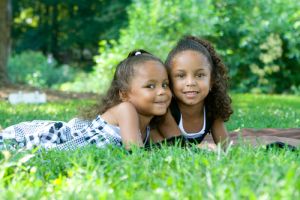
Exploring the history and experiences of mixed heritage persons and inter-racial relationships across the world

Exploring the history and experiences of mixed heritage persons and inter-racial relationships across the world
 Maybe it is because I have started on this project that I am sensing a growing awareness from mixed race people in the UK, the US and other places in Europe. Whilst this is all good, there are some things that are being said by mixed race people that make me uncomfortable to say the least. Things like ‘mixed women are the most beautiful’, ‘mixed kids are the cutest’ and the one I particularly dislike is the statement that we will all be ‘brown’ (used here as a proxy colour for all mixed race individuals) in the future.
Maybe it is because I have started on this project that I am sensing a growing awareness from mixed race people in the UK, the US and other places in Europe. Whilst this is all good, there are some things that are being said by mixed race people that make me uncomfortable to say the least. Things like ‘mixed women are the most beautiful’, ‘mixed kids are the cutest’ and the one I particularly dislike is the statement that we will all be ‘brown’ (used here as a proxy colour for all mixed race individuals) in the future.
In my opinion, it is always dangerous to claim or give the impression of being better, prettier, nicer and cuter. It is from that sense of pride that injustices arise. The racism in the Dominican Republic is an example of that. That same pride is also from where your enemies are likely to attack. What would scare a white extreme racist more than the thought that his precious country will be filled with brown people? Will he not react and try to discourage any racial mixing and more non-white immigration, sometimes with extreme violence? What about the people, including non-whites, who insist that just one drop of non-white blood makes you the non-white parent’s race as in the ‘one drop rule’? These are the responses of people under perceived attack from miscegenation.
The truth of the matter is that everyone is mixed already – yes, everyone. Most people, though, think in terms of the sort of accepted racial categories when determining who is mixed. If you have been paying attention, you will know that there are countries around the world that can claim large or even majority ‘brown’ population such as the Dominican Republic and Brazil. However to get to such a large population, the racial mixed race has to achieve enough of a share of the population that people of mixed race are as or more likely to marry another mixed race person as opposed to mixing with someone from one of the parent’s races. Anything other than that and assimilation starts to take place.
Assimilation? For example, if I am white and I marry a black person in a predominately white society, my children will be mixed. If my children marry white people, more likely since we are in a predominately white society, their children will be mixed but more likely to be more white than brown. If those children then also marry whites then my great grandchildren will be practically white. How many further generations before my black wife is forgotten and my descendants see themselves as whites? Assimilation might explain some of the racial classification claimed by many in countries where you would expect different – like Puerto Rico, maybe?
 There are countries in the world where a minority mixed race community exists, for example Zimbabwe and South Africa. In South Africa, in the Cape region, the mixed race people, known as coloureds, have gained sufficient traction to be the majority ethnic group. Taken as a whole with the rest of South Africa, they only make up just over 8% of South Africa’s population. The Southern African coloureds, most like other minority mixed communities around the world, exist because there was a social or political system in place that made it unlikely for members of this group to mix with other races. These allowed them to sustain a small, slow growing but visible minority. With the removal of these restrictions at independence and with the end of apartheid, it will be interesting to how much longer these communities continue to exist as communities. Zambia and Malawi’s population seem all but integrated as there was only a small colonial presence in those countries.
There are countries in the world where a minority mixed race community exists, for example Zimbabwe and South Africa. In South Africa, in the Cape region, the mixed race people, known as coloureds, have gained sufficient traction to be the majority ethnic group. Taken as a whole with the rest of South Africa, they only make up just over 8% of South Africa’s population. The Southern African coloureds, most like other minority mixed communities around the world, exist because there was a social or political system in place that made it unlikely for members of this group to mix with other races. These allowed them to sustain a small, slow growing but visible minority. With the removal of these restrictions at independence and with the end of apartheid, it will be interesting to how much longer these communities continue to exist as communities. Zambia and Malawi’s population seem all but integrated as there was only a small colonial presence in those countries.
Research at the UK’s Kent University has revealed that there is evidence of a growing consciousness and interest in mixed race identities among 18-25 year olds in Britain but cannot yet speak of a coherent or unified mixed group or experience (http://www.kent.ac.uk/news/stories/mixed-race/2010). This will be true of most of the European and possibly the Northern American experience. It is more than likely that many of these young people will marry someone from one of their parent’s races as they will likely be a member of that community. Just as some families start to assimilate, other will experience a little mixing due to the growth inter-racial marriages going on. But even with that the percentage of UK people identifying themselves as being of ‘mixed race’ is expected to grow substantially from the figure of 1.2 per cent of the population in the 2001 census to as high as 4.2 per cent in 2051. In the States mixed race people make up some 2-3% of the population and in Canada the percentage is lower. Is that enough to create ‘brown’ societies? I doubt it.
Even with the some 30 million Chinese men unlikely to find a Chinese wife in a few years’ time and the 2 million or so more black women then black men in America, the total mixed race population of the world is unlikely to reach tipping point.
So let’s stop acting like we are that special and recognise our place in the survival of the human race by playing our part in the mixing of the genes – that has always been our place in the greater scheme of things, our place in the circle of life.